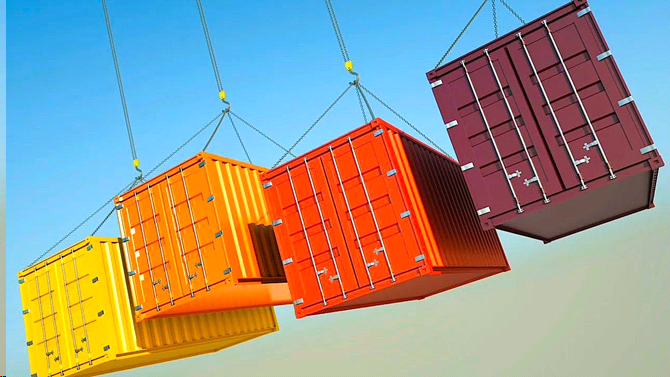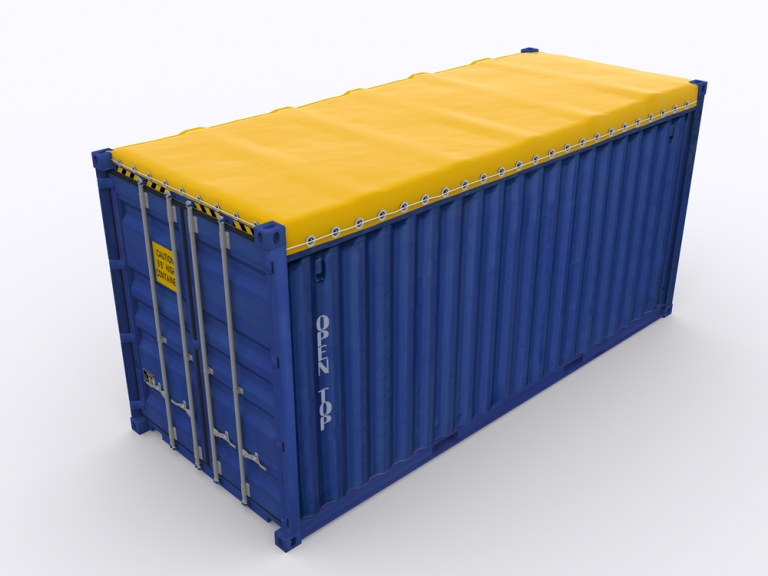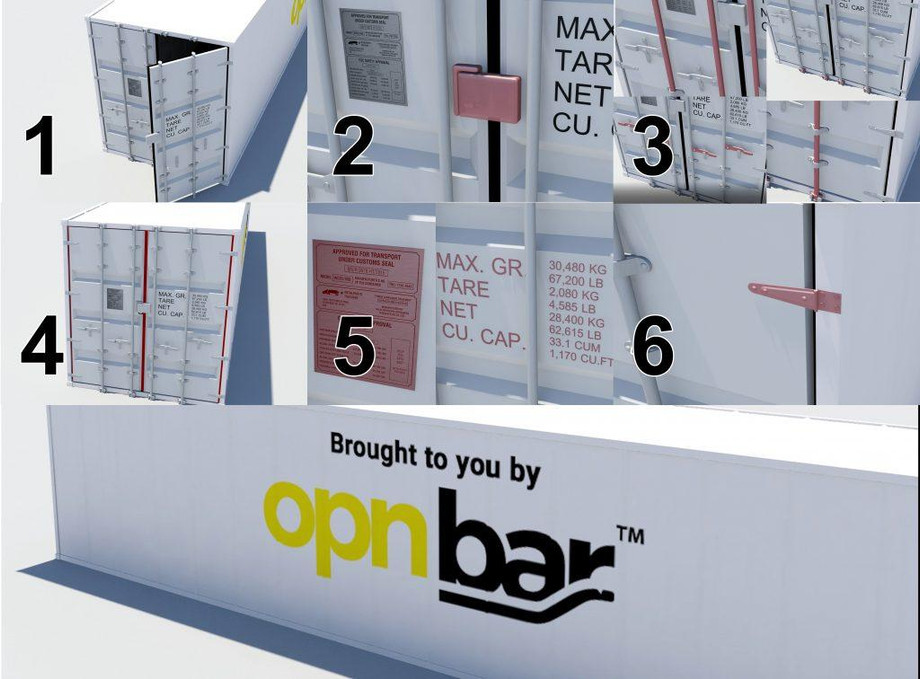
The rise of modern-day shipping containersas a key element of global trade has sparked curiosity about their manufacturing origins. These standardized metal boxes, responsible for transporting goods across vast distances, are produced through an extensive global supply chain. Here, we will explore the global production of shipping containers, shedding light on the countries that play a significant role in their manufacturing process.
China
Undoubtedly, China has emerged as the world's leading manufacturing hub for shipping containers. The country's well-established industrial infrastructure, skilled workforce, and competitive production costs have made it a preferred location for container manufacturing. Major Chinese cities like Shanghai, Ningbo, and Shenzhen are home to numerous container production facilities, which cater to both domestic and international demand.
South Korea
South Korea holds a prominent position in the global shipping container manufacturing industry. The country is known for its advanced technology, high-quality production standards, and innovative designs. Leading South Korean container manufacturers, such as Hyundai, have a strong presence in the market and supply containers to customers worldwide.
Japan
Japan, renowned for its engineering prowess, is another significant player in the shipping container manufacturing sector. Japanese companies, including Mitsubishi and Daikin, are recognized for their expertise in producing specialized containers, such as refrigerated or insulated units, to cater to specific cargo requirements.
Europe
Several European countries contribute to the production of shipping containers. Germany, in particular, boasts a robust container manufacturing industry, with companies like Hapag-Lloyd Container, CIMC German Engineering, and Cargotec operating production facilities. Other European countries, including Italy and the Netherlands, also have a notable presence in the container manufacturing sector.
United States
Although the United States may not be the dominant player in container manufacturing, it still hosts several container production facilities. American companies like Wabash National Corporation and Stoughton Trailers manufacture containers to cater to domestic and international markets.
Other Countries
Beyond the major manufacturing hubs mentioned above, container production is carried out in various other countries worldwide. These include Vietnam, Malaysia, India, Thailand, and Brazil, among others. These countries often serve as manufacturing bases for global container manufacturers looking to diversify their production locations or tap into regional markets.
Supply Chain Dynamics
The production of shipping containers involves a complex supply chain that spans multiple countries. While some companies handle the entire manufacturing process internally, others outsource certain components or stages of production to different locations. For example, the production of steel panels, a key component of shipping containers, often takes place in countries like China or South Korea, where steel production is highly efficient and cost-effective. These panels are then transported to other locations for assembly and final finishing.
Impact of Shipping Containers on Global Trade
The use of shipping containers has had a significant impact on global trade. Prior to the introduction of containerization, goods were transported in a variety of ways, including loose in the hold of a ship, in sacks or boxes, or on pallets. This made loading and unloading slow and labor-intensive, and it often resulted in damage to the cargo.
With the introduction of standardized shipping containers, loading and unloading became much faster and more efficient. The containers could be easily moved from ship to truck to train without the need for unpacking and repacking. This reduced the time and cost of transporting goods, making it possible to move larger volumes of cargo at a lower cost.
Shipping Containers are the cargo containers that allow goods to be stored for transport in trucks, trains and boats, making intermodal transport possible. They are typically used to transport heavy materials or palletized goods. Shipping Containers are used to protect transported cargo from shock and bad weather conditions, as well as keep storage products intact. They were first used in the 1950s and were initially developed for the purpose of commercial shipping.
Shipping containers are also referred to as, ISO container, conex box, railroad container, intermodal container and certain truck trailers. This industry term refers to the International Standards Organization (ISO), the largest developer of international standards and the organization that developed the standard dimension specifications for steel shipping containers used worldwide.
The design of the ISO standard containers allows for intermodal shipping, which is the movement of containers from one mode of transport to another, like ship, rail, or truck, without the need of having to load and unload, and reload its contents.
Shipping Containers are used to protect transported cargo from shock and bad weather conditions, as well as keep storage products intact. They were first used in the 1950s and were initially developed for the purpose of commercial shipping container transport.
Depending on the type of product that is going to be sent, the Shipping Container can vary in dimension, structure, material, etc. Characteristics of these shipping containers were later standardized, something that expedited transport without the need to load and unload the merchandise along the way.
Conclusion
The manufacturing of shipping containers is a truly global endeavor, with production facilities spread across multiple countries. China stands as the primary manufacturing hub, owing to its industrial capabilities and cost advantages. Other countries, such as South Korea, Japan, Europe, and the United States, also contribute significantly to the production of shipping containers. The global production network ensures the availability of these standardized metal boxes to meet the ever-increasing demands of the global trade industry.
Shipping Container Opening and Closing Tool
Shipping containers often take a beating, traveling around the world, being exposed to freezing conditions and rust due to seawater or when the frost has melted.
During the cold season, and in freezing parts of the world, our shipping container tool can benefit the opening and closing of frozen shipping container doors and hard to open or rusted containers.
Injuries often occur as a result of personnel trying to open and close difficult container doors, and often are the result of inappropriate techniques being used to open them.
To aid in opening and closing shipping container doors, we introduce OPNBar.
A Shipping Container (also known as Intermodal Container, ISO Container,Railroad Container, and certain Truck Trailers) is a large standardized shipping container, designed and built for intermodal freight transport. Shipping Containers can be used across different modes of transport. They can go from ship to rail to truck, without unloading and reloading their cargo.
The metal doors on the shipping containers on these containers are standardized. Shipping Containers use the same type and style of doors and locking bars, which our tool can be used.
Lengths are as follows: 20′, 40′, 45′, 48′, 50′, 53′. All these containers are globally used to transport cargo. The 53′ length is now, the new the standard length.
Here are some likely reasons a Shipping Container door will not open or close. Visit https://www.shippingcontainertool.com/what-is-a-shipping-container/ to find out how to overcome some of these issues.
Doors and lockrods may warp or container frame is racked so that the door gear will not operate correctly. This may be caused by cargo shifting during transit. Look at the container to make sure that the doors are aligned and level, both top and bottom.
The hinge pins and blade are seized due to corrosion.
The door gasket has been damaged and is preventing opening. Door gaskets are designed to present two or more fins against the structure or adjacent door. These are generally flexible but when the gasket is damaged, they may become hard or blocked thus jamming the door closed, or preventing it being closed.
Water has become trapped between frozen shipping container doors, particularly relevant to refrigerated cargoes, or containers with moisture releasing cargoes in cold weather.
For more about:- https://www.youtube.com/watch?v=N3pUEuZRg9c&feature=emb_title
Mailing Address:
10053 Whittwood
Dr, Suite 11284 Whittier, CA 90603 USA
657.6.OPNBAR (657-667-6227)
Website:- https://www.shippingcontainertool.com/what-is-a-shipping-container/




























